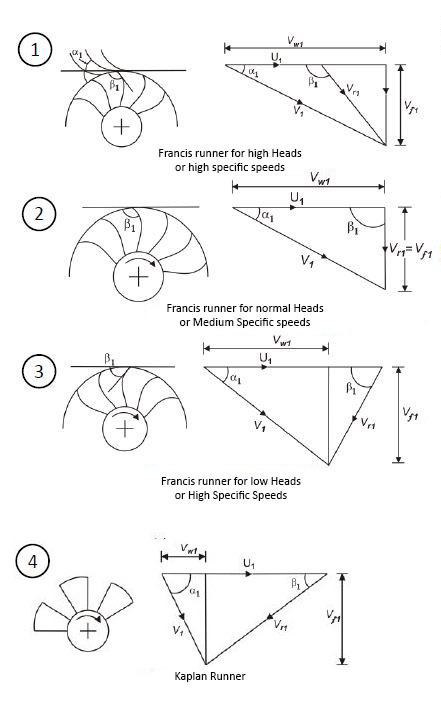 | ||
Francis turbine converts energy at high pressure heads which are not easily available and hence a turbine was required to convert the energy at low pressure heads, given that the quantity of water was large enough. It was easy to convert high pressure heads to power easily but difficult to do so for low pressure heads. Therefore, an evolution took place that converted the Francis turbine to Kaplan turbine, which generated power at even low pressure heads efficiently.
Contents
Changes
Turbines are sometimes differentiated on the basis of the type of inlet flow, whether the inlet velocity is in axial direction, radial direction or a combination of both. Francis turbine is a mixed hydraulic turbine (the inlet velocity has Radial and Tangential Components) while the Kaplan turbine is an Axial hydraulic turbine(the inlet velocity has only Axial Velocity Component). The evolution consisted of the change in the inlet flow mainly.
Nomenclature of a Velocity Triangle:
A general velocity triangle consists of the following vectors:
Generally, the Kaplan turbine works on low pressure heads (H) and high flow rates (Q). This implies that the Specific speed (Ns) on which Kaplan turbine functions is high as Specific speed (Nsp) is directly proportional to Flow (Q) and inversely proportional to Head (H). On the other hand, Francis turbine works on low Specific speeds i.e., high pressure heads.
In the figure, it can be seen that the increase in Specific speed (or decrease in Head) have following consequences:
Hence, these are the parameter changes that has to be incorporated in converting a Francis turbine to Kaplan turbine.
